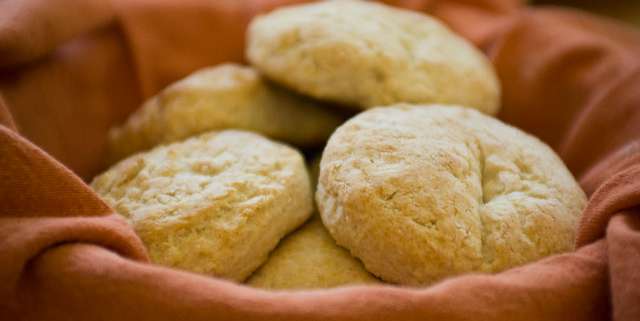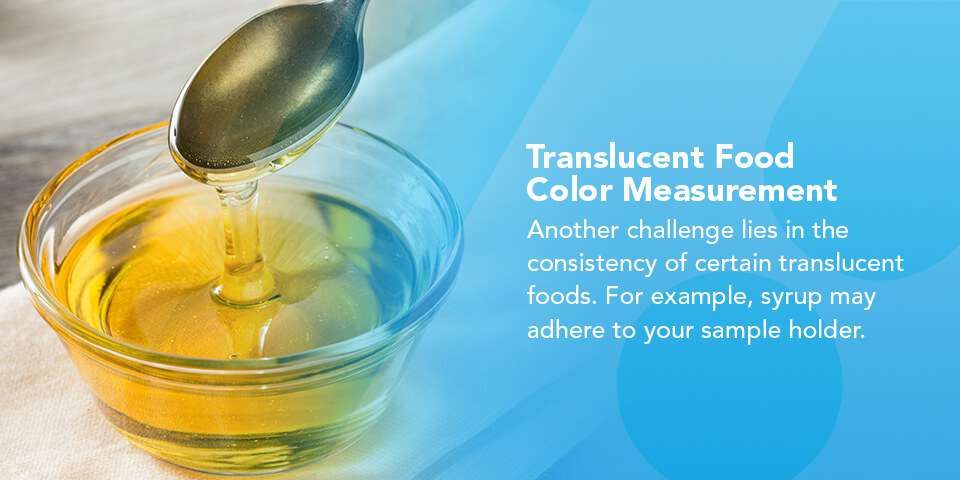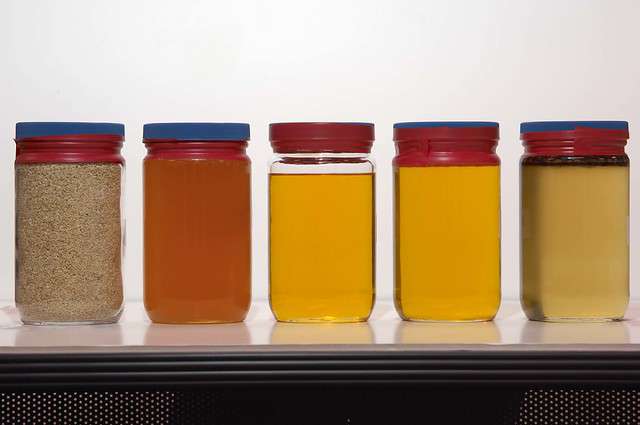Color Classification System for Food
Color classification is based on how light reacts to a food product. Spectrophotometric analyses of opaque food samples rely solely on reflectance light value to quantify color. These foods vary from liquids to solids as well as texture and uniformity. Because even the same foods can vary greatly in quality and consistency, the United States Food and Drug Administration (FDA) has developed a list to classify all foods based on how well they capture light. The three classifications are:
- Opaque foods: These foods do not allow light through them, instead reflecting the light back. While opaque foods are most often solids like fruits, meat, and cheese, thicker liquids such as tomato juice or soup can also be considered opaque.
- Translucent foods: These foods partially reflect light while allowing some light to pass through. They are typically semisolid or liquid foods like jam, gelatin, and fruit juice.
- Transparent foods: These foods are recognized entirely by transmitted light. Examples include liquids like soda, oil, alcohol, and clear drinks.
Opaque Food Color Measurement
Opaque samples are often highly textured and non-uniform and require color sample averages to obtain accurate readings. Color measurement of these foods is based completely on light reflectance values. This technology observes light reflectance from various angles and provides a more uniform color reading of samples with opaque color classification properties.
The list of opaque foods includes:
- Flour
- Orange juice
- Nuts
- Corn flakes
- Fruit
- Meat
- Cheese
- Crackers
- Tomato soup
Certain cooking methods, such as baking and frying, can present a challenge in measuring food opacity. The coatings and shells that form during these processes create a nonuniform consistency and are often too fragile to accurately measure without affecting the integrity of the product — and consumer perception as a result.
To avoid these challenges, it's vital to use non-contact spectrophotometric instrumentation that employs the best color measurement techniques available. When you have the right tools, you can gauge color variables from any food and deliver accurate readings for quality assurance.




